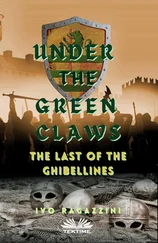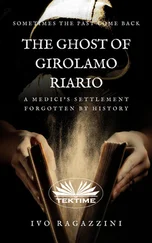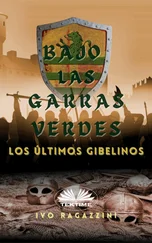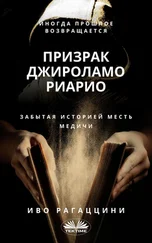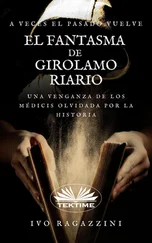Ivo Ragazzini
SECRETS OF THE RUBICON
Rome's Ruby Red Line
Original title: I Segreti del Rubicone
Translated by: Rosemary Dawn Allison
© "Secrets of the Rubicon"
© 2018 Ivo Ragazzini
First paperback edition November 2018 -- Montag Edizioni
Second paperback edition September 2020
First digital edition August 2019
Second digital edition September 2020
The Author reserves all rights, including reproduction and even partial translation into any other language. The reproduction and use of this work, even partial and by any means, be it graphic, electronic or mechanical, is not permitted without the Author's written authorization. The same does not authorize the modification, or translation into any other language, of one or more parts of this work. Any unauthorized use constitutes a violation of copyright.
For all requests please write to:
ragazzini.ivo@gmail.com
or contact the author at +39 3477496534.
No part of this book may be reproduced, translated, or stored in a retrieval system, or transmitted in any form or by any means, electronic, mechanical, photocopying, recording, or otherwise, without express written permission of the author.
For requests write to ragazzini.ivo@gmail.comor call the author +39 3477496534.
Contents
Preface
Where the Rubicon lay was also the road to Rome
What was the real Rubicon?
The conversation between Caesar and Hortensius continues
Brief historical introduction
Caesar's arrival in Cesena (Curve Caes Arena)
The Urgon witch
The disposition of Caesar and Pompey's troops
Mark Anthony, Hortensius and Caesar's plan
Caesar's political plan for Rome
Caesar climbs the Colle Garampo to observe Pompey's troops
Curva Caes Arena -- Caesar's circular arena
The Gallic legions arrive and begin to resettle the land in Romagna
La Caveja the symbol of Romagna
A Flamen comes to threaten Caesar telling him not to dare cross the Rubicon
The curse of the Rubicon
The conversation between Caesar and the Flamen
The Flamen curses the Rubicon border
Superstition makes Caesar free a few horses on the Rubicon to make them cross the forbidden border
The Urgon witch
What was happening beyond the Rubicon among Pompey's ranks?
The mysterious caves of Santarcangelo di Romagna
The Cult of Mithras
The elections for the Chief Consul of the Year in Rome
Caesar's secret plan
Arriving in Rome, Caesar's men set about seeking alliances to influence his election
The festivities for the Head of the Year -- The New Year
New Year on the Rubicon
Caesar secretly arranges the plan to attack the Rubicon
Caesar pulls back to Ravenna far from the Rubicon
The day before the attack on the Rubicon
The Rubicon Malanotte
Rubicon nightmares
Caesar crosses the Rubicon and takes Rimini by surprise
The Urgon Malanotte and the Caligaes cemetery
The Caligaes cemetery
Pompey's troops on the Rubicon surrender to Caesar
Caesar receives a message from the Flamen Jovis
Was there a small area of neutral land between the borders of Romagna and Rome?
Caesar's descent to Rome and the dire forewarnings of the population
Caesar's march through the Marche
The cults in the temples of the Marche
Caesar's conquest of Italy
Caesar's end
Biography of the author
By the same author: "The Ghost of Girolamo Riario"
By the same author: "Under the Green Branches - The Last Ghibellines"
Once upon a time, on the way to Rome, there was a land that was traversed and defended by the Romans as a sacred, impassable border.
That land was formerly called Flaminia, it was then renamed Romagna for reasons that you will soon discover for yourself.
Today that sacred and impenetrable border, protected by the Gods of Rome, is no longer, but it existed then and many events occurred around there.
At that time the Romans knew very well what that border was and why they had built it, but from the Middle Ages until today, no one knew where it really was and many have tried to find it.
But there was no unified search and three or four conflicting theories have arisen regarding its location.
But where did that border go? And mostly, what really happened there?
Today, and for centuries, many have continued to ask themselves this question. Occasionally various societies and academies have gathered together in argumentative meetings to decide, now in favor of one place, now in favor of another.
But to questions such as:
For who and why was that border built the first time?
Why and how was it built?
Why did the Romans call it Puniceus Rubicon?
Why were there red sands that no longer exist today?
Was there a place called 'Malanotte' (Dreadful night) on the banks of that border?
Did Caesar and many Roman legionaries have nightmares or a Malanotte before crossing that border?
It seems that no one has tried to answer these and many other questions.
And that is shame, because it would have led to discovering a few answers and much more about what the Rubicon was, and what it was for, which would have led to discovering why and who had built that border, plus many other novelties that you will discover for yourself while reading.
Briefly, we have been discussing and researching the location of the Rubicon for centuries, but before finding the location of this border, many failed to discover what it was for and who and why built it the first time before Caesar was even born.
And if anyone had investigated these things thoroughly, I am convinced they would inevitably have discovered this and more.
I only add that this book, is not a rehashing of other works, and will lead you to discover many other mysteries and stories about the history of Rome, the Rubicon and ancient Romagna for the first time that you may never have suspected.
Straddling somewhere between an essay and historical account, the way is opened through twenty centuries of history and paths that have never been travelled before. This book is based on historical research, forgotten local legends, etymological research and observations that have never been made before. For the first time, light is shed on the darkness of those disputed events on the ruby-red border named the Rubicon. A unique story has been created that refers to nothing that has been written previously on the subject.
In particular, this book will answer the following questions for the first time:
What really was the Rubicon?
Why was it given that name?
Who for and why was the border created long before Caesar?
What was Romagna at the time?
What were the symbols and insignia used by Caesar's Gallic legions?
What insults did the Roman legionaries and warriors of that time shout?
What was the New Year's feast at the time of Caesar?
Why did Caesar cross the Rubicon immediately after the New Year's elections?
And, to tell the truth, many other things that you may never have guessed at, in a crescendo of facts and revelations that will reveal many facts and places that have been forgotten by history during that turbulent period of transition from republic to the Roman Empire.
So, enjoy reading and rediscovering the history of the Rubicon as well as many other facts.
Where the Rubicon lay was also the road to Rome
Romagna towards the end of 50 BCE (before common era). Julius Caesar and his military escort turned away from Ravenna to travel to Cesena
"Ubi est Rubico finis, etiam est Roman Via" (Where there is the Rubicon border there is also the road to Rome), Caesar told the young escort commander Quintus Hortensius who was sitting next to him on a military chariot, when they travelled from Ravenna they crossed the road leading to Cesena, which was guarded by the Tenth 1legion. It was one of the places Caesar, already in debt for a sum of over one hundred million sesterces, was building in Romagna near the border called the Rubicon.
Читать дальше
